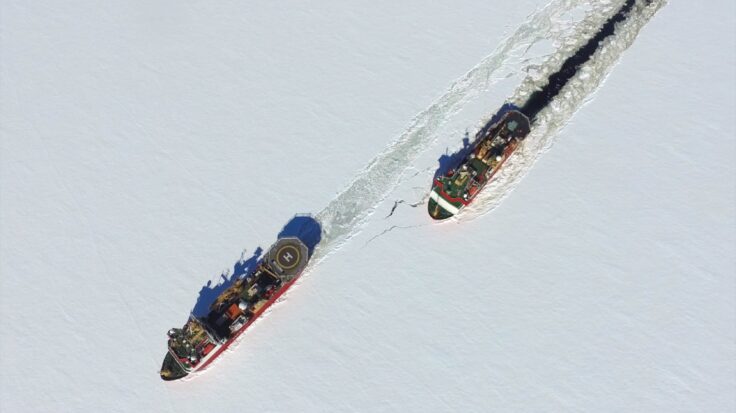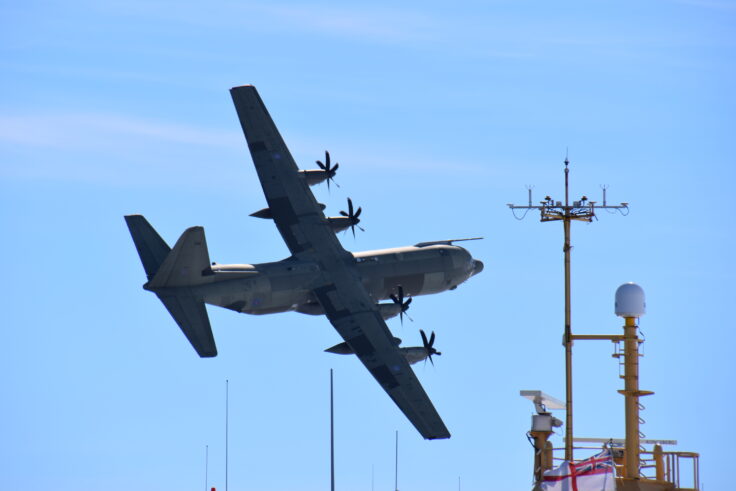Essential cargo delivered for science on Thwaites Glacier
The British Antractic Survey’s vessel RRS Ernest Shackleton teamed up with the Royal Navy survey ship HMS Protector to help scientists begin a five-year mission to understand how West Antarctica is contributing to global sea-level rise.
Working together the ships crunched their way through over 300 miles of sea ice to a remote Antarctic ice shelf to support a team of around 100 scientists who seek to understand a glacier the size of Great Britain.

The gigantic Thwaites Glacier is melting – accounting for four per cent of the annual sea level rise every year. Scientists fear the huge mass of ice could eventually collapse, raising the global sea level 80 centimetres – more than two and a half feet – and so are beginning a five-year programme of field activities, called the International Thwaites Glacier Collaboration, on the glacier.
With the nearest British and American scientific research stations more than 1,600 kilometres away from the research site, the two ships were called upon to deliver essential heavy stores to the ice edge in preparation for the arrival of the scientists next year.
The two vessels delivered four large tracked vehicles, 14 snow mobiles, numerous sledges, two cabooses to act as living quarters, fuel and food to last nearly 5,000 days.
Upon arriving at the Stange Ice Shelf, a team went on to the ice to dig deep holes to secure the ship’s berthing lines. The crews then worked around the clock for 72 hours to offload around 600 tonnes of equipment, machinery and supplies as quickly as possible.
BAS Director of Science, Professor David Vaughan says:
“Without the assistance of HMS Protector, we just couldn’t have delivered all the necessary cargo onto this remote part of West Antarctica in time to begin this vital research programme, which will help us predict future global sea-level rise. This partnership with the Royal Navy has been enormously valuable and the kit they have delivered will mean that our joint UK/US science teams can begin their fieldwork on schedule next year.”
Joining in the long-range Antarctic mission have been BAS Twin Otter aircraft and an RAF Hercules, which dropped 70 tonnes of supplies to outlying UK research sites and conducted a fly-past of Protector while she was berthed at the ice shelf.

“It’s been a privilege for HMS Protector to contribute to the International Thwaites Glacier Collaboration and a thrill for the ship’s company to see first-hand how this globally significant research is being supported,” said HMS Protector’s Commander, Commander Peter Higgins.
HMS Protector has been away from its home port since September 2015 and will not return home until May next year. She spends summer in the Southern Hemisphere conducting research on the fringes of the frozen continent and austral winters in milder waters off West and East Africa.
More about the International Thwaites Glacier Collaboration here